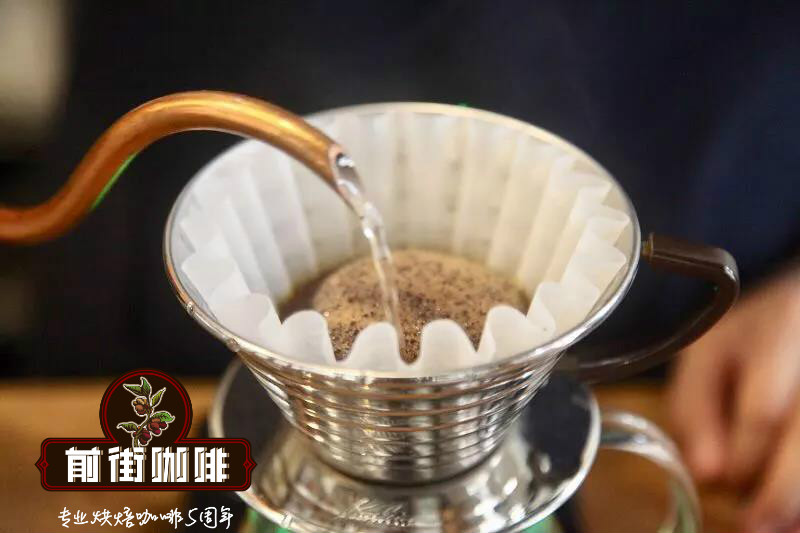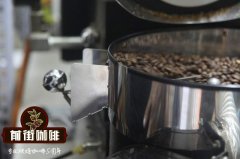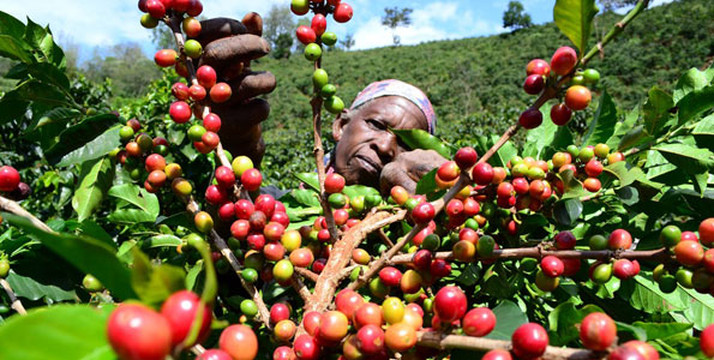Introduction to the characteristics of Sidamo Coffee in Sidamo Coffee, Ethiopia

Professional coffee knowledge exchange more coffee bean information please follow the coffee workshop (Wechat official account cafe_style)
Ethiopia
Ethiopia is at the center of the Horn of Africa and is a landlocked country. The territory is mainly a mountainous plateau, a large part of the Ethiopian Plateau, the central and western part of the plateau is the main body of the plateau, accounting for 2 to 3 of the whole territory, the East African Rift Valley runs through the whole territory, with an average elevation of nearly 3000 meters, known as the "roof of Africa". The terrain around the plateau is gradually declining.
Sidamo producing area
The Sidamo producing area happens to be located in this lush and mysterious canyon. As the birthplace of coffee, Ethiopian coffee has an unforgettable unique aroma and distinctive and insurmountable quality.
The refreshing acidity and elegant taste of Sidamo water washing can only be felt in high-end champagne, as well as the unique, rich mocha aroma and high sweetness of mocha coffee. Compared with the sun, it has a high balance of aromas and flavors, such as nutty fruit aromas, orange acidity and a long finish of cocoa.
Founded in 2012 by Ato Esmael and his family, Kayong Mountain single Farm covers an area of about 300 hectares, of which more than 200 hectares are still in pristine reserved forest. The selected seat at Kayong Mountain Farm is located in the elite Shaquiso producing area of Guji (Shakisso/Shakiso), more than 500 kilometers from the capital, Addis Ababa. The seat of Guji producing area is actually on the east side of Yega Schiffe, but the part next to Yega Chevy is the Hambela producing area. If you want to go to Shachiso, you usually don't go through Yega Chevy, but travel south from the capital to the town of Yirga Aleam after about six hours, abandon the road on the right to Yega Chet, turn into Highway 82 on the left, and go all the way southeast. It will take about four hours to reach Shaquiso (N 5 °46 & # 39). 21 "E38 °54 & # 39TIX", about 1730m above sea level.
The most famous economic activity in Guji producing area in history is gold mine! And the main gold mining area K ibre Mengist is near the northeast of the town of Shakisuo, looking for beans up and down the mountains, there is no lack of opportunities to cross the mining area, or the remains of panning for gold through streams, the gold mining industry of real gold and silver is interesting compared with coffee black gold in the past.
Just like the two key trends that we have been observing and pursuing in previous years, one is the rise of Guji producing areas, and the other is the development of single farm system. This year seems to be a year when these two trends blossom and bear fruit.
If you recall, according to the Ethiopian decree, there are three coffee export systems: (1) the largest private processing plant system for export through ECX; (2) the cooperative system; and (3) the single farm system. In these three systems, cooperatives and single estates can be exported directly without competitive bidding through ECX, which can be said to have completely reliable traceability / product curriculum vitae (traceability). However, if we get to the bottom of the matter, the cooperative is, after all, a centralized treatment of cherries harvested by small farmers, not 100% traceable. After all, a single farm is the only possibility of moving forward to the next generation. In fact, the single farm system has always existed in Ethiopia, but the percentage has not been high, and it has traditionally belonged to a large number of commercial batches that do not attach importance to quality. With Ethiopia's emergence in the third wave of boutique coffee in the past two or three decades, in addition to traditional coffee workers, Ethiopia is also gradually emerging a number of new people influenced by Western culture, hoping to bring changes to this industry. in addition to traditional exporters have devoted themselves to producing areas, it has also attracted an upsurge of returning from Europe and the United States to their hometown. How important is the single farm system (which we temporarily call Single Farm Project, or SFP for short)? We all know that Ethiopia is dominated by a smallholder system, but the smallholder system is impossible to achieve very important implementation concepts such as full traceability, single variety batches, special treatment batches, customized batches and so on. Single farm is the only answer to all these questions.
There are also many differences between the Guji producing area and the Yega Snow producing area, which is generally pursued by everyone, in terms of location, local conditions, nationality, language, and so on, while the coffee flavor is on the premise of showing the typical wonderful flavor of Ethiopia. there are also some subtle differences. Guji belongs to the largest Oromo ethnic group in Ethiopia, using Oromifa, while Yega Chefen is the traditional living area of the G edio. On the whole, the Yega Chevy producing area became famous and developed early, while Guji is a rising star. On the one hand, the Guji area is larger, it is not difficult to find fertile virgin land protected by primeval forests, and it is not difficult to find fertile virgin land protected by primeval forests. Moreover, Yega Chefe has long been a battleground for military families because of its fame. Most of the new processing plants or farms are in the Guji producing area, and it is not difficult to imagine that Guji will be an important center for the innovation of Ethiopian boutique coffee in the next few years.
END
Important Notice :
前街咖啡 FrontStreet Coffee has moved to new addredd:
FrontStreet Coffee Address: 315,Donghua East Road,GuangZhou
Tel:020 38364473
- Prev

What are the coffee producing areas in Tanzania? Flavor characteristics and story introduction of coffee beans in Tanzania
Professional coffee knowledge exchange more coffee bean information please follow the coffee workshop (Wechat official account cafe_style) Tanzania Tansania population: 44929000 Tansania produces a reasonable number of Robots beans, concentrated in the northwest, near Lake Victoria. The rest of the area uses the nature of high altitude to grow coffee beans. Tanzania Tanzania Tanzania
- Next

A different style of African Coffee: the Story of the Coffee producing area of Mount Kilimanjaro, Tanzania
Professional coffee knowledge exchange more coffee bean information please follow the coffee workshop (Wechat official account cafe_style) mention the coffee-producing regions in Africa, which countries do you think of? Is Ethiopia the earliest birthplace of coffee? Is Kenya famous for its sour coffee? Or Rwanda, which is famous for the floral and fruity aromas of coffee? The editor does not intend to introduce the above information in this article.
Related
- Detailed explanation of Jadeite planting Land in Panamanian Jadeite Manor introduction to the grading system of Jadeite competitive bidding, Red bid, Green bid and Rose Summer
- Story of Coffee planting in Brenka region of Costa Rica Stonehenge Manor anaerobic heavy honey treatment of flavor mouth
- What's on the barrel of Blue Mountain Coffee beans?
- Can American coffee also pull flowers? How to use hot American style to pull out a good-looking pattern?
- Can you make a cold extract with coffee beans? What is the right proportion for cold-extracted coffee formula?
- Indonesian PWN Gold Mandrine Coffee Origin Features Flavor How to Chong? Mandolin coffee is American.
- A brief introduction to the flavor characteristics of Brazilian yellow bourbon coffee beans
- What is the effect of different water quality on the flavor of cold-extracted coffee? What kind of water is best for brewing coffee?
- Why do you think of Rose Summer whenever you mention Panamanian coffee?
- Introduction to the characteristics of authentic blue mountain coffee bean producing areas? What is the CIB Coffee Authority in Jamaica?

